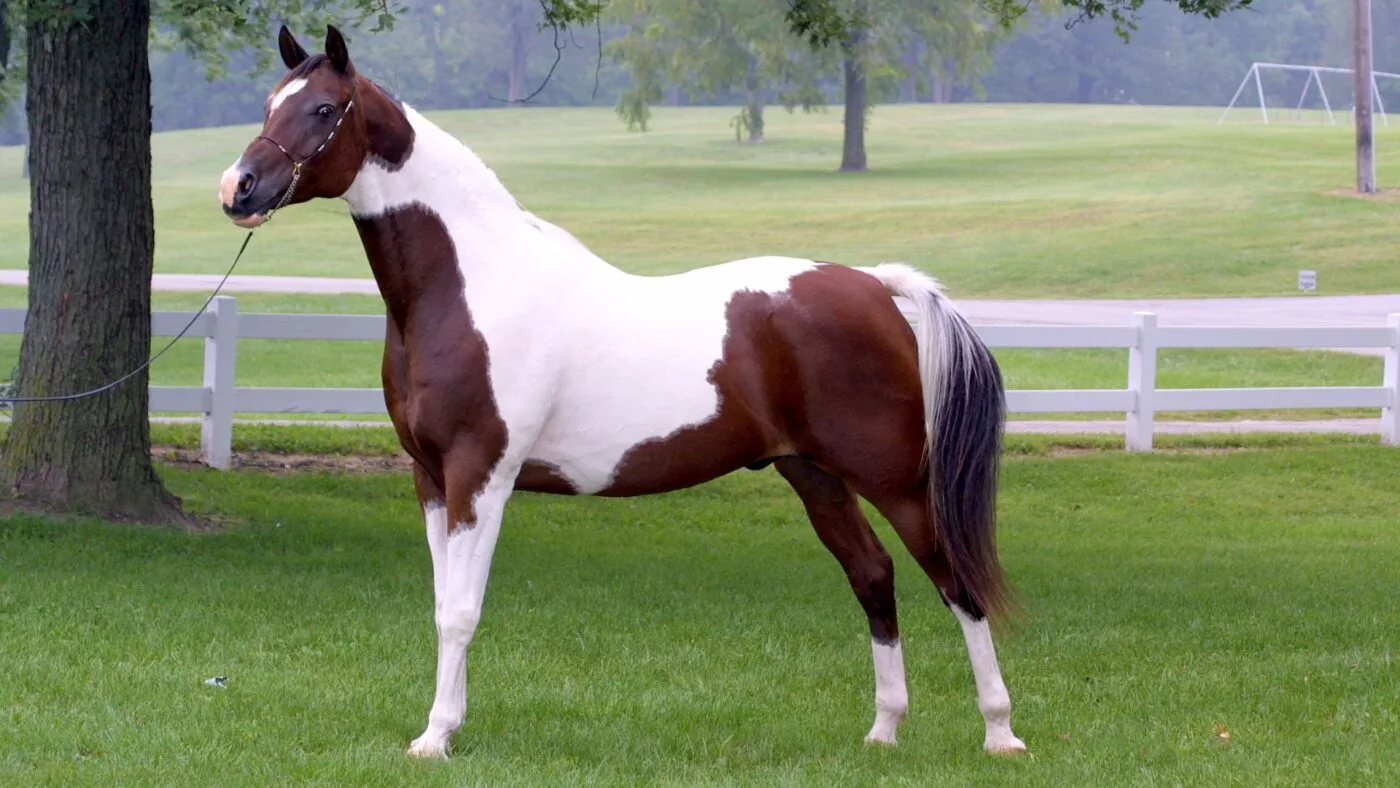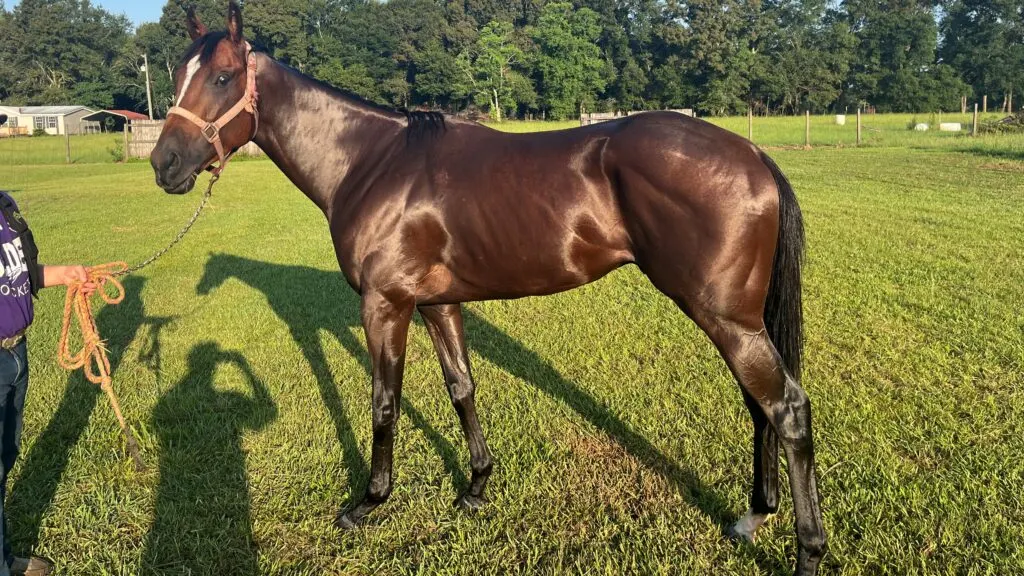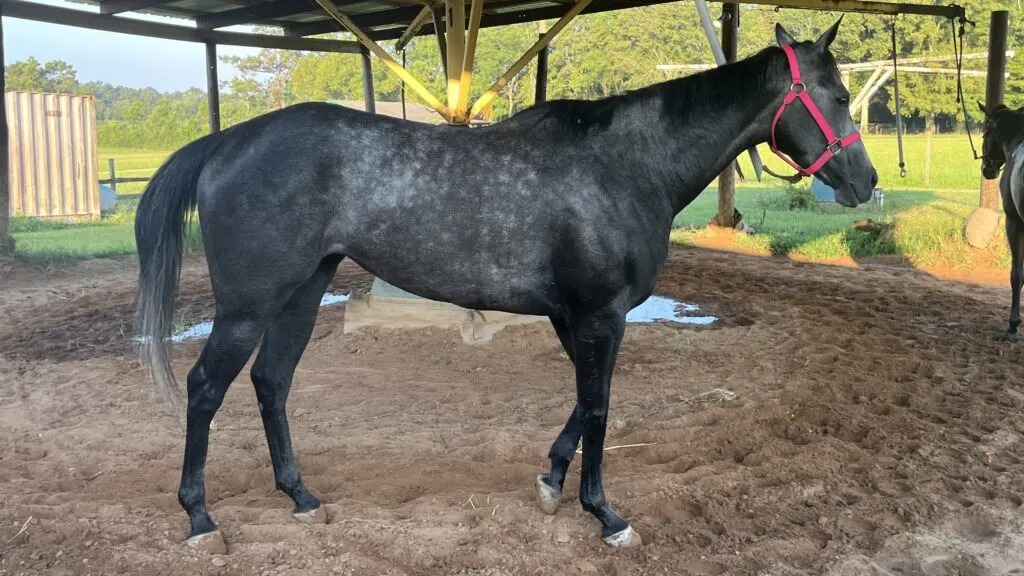Last updated: January 5, 2024
Did you know that the Thoroughbred, renowned for its speed and spirit, has been dominating the racetrack since the 17th century? But is this breed the only star of the racing world? This question often sparks curiosity among racing enthusiasts and equine admirers alike.
While Thoroughbreds are indeed a prominent figure in the racing scene, they are not the sole participants. As a seasoned horse enthusiast with years of experience in the horse racing industry, I’ve witnessed the diverse collection of horse breeds that race.
In this exploration, we’ll delve into the world of horse racing, uncovering the roles of different breeds and debunking the common misconception that all racehorses are Thoroughbreds. Join me in unraveling the tapestry of equine athleticism and diversity that adorns the racecourses around the globe.

Horse Breeds that Race
1. Thoroughbreds: Known for their speed and agility, Thoroughbreds are the stars of flat racing, excelling in middle-distance races.
2. Quarter Horses: Renowned for their explosive acceleration, Quarter Horses dominate short-distance races. The American Quarter Horse is a strong, fast, compact horse that can run a quarter of a mile faster than any horse in the world.
3. Standardbreds: The preferred breed for harness racing, Standardbreds are valued for their consistent pace and robust build.
4. Arabians: Excelling in endurance racing, Arabians are celebrated for their stamina and ability to perform over long distances.
5. Appaloosas: Participating in events like the Cricket Bars Futurity, Appaloosas are known for their versatility and distinctive spotted coats.
6. American Paint Horses: Known for their distinctive color patterns and shared lineage with Quarter Horses and Thoroughbreds, American Paint Horses have proven their prowess in racing, particularly in short-distance events.
7. Irish Sport Horses: Often seen in steeplechasing, these horses are known for their strength, agility, and jumping ability.
8. Mongolian Horses: Used in traditional racing, these hardy horses are celebrated for their endurance and resilience, especially in long-distance races.

Diversity in Horse Racing
The racetrack is a melting pot of equine excellence, showcasing more than just the prowess of Thoroughbreds. In my years immersed in the horse racing world, I’ve encountered a fascinating spectrum of breeds, each bringing its unique flair to the sport.
Flat Racing
Dominated by Thoroughbreds, known for their exceptional speed and agility, flat racing is where these equine athletes truly shine. However, in certain regions, you’ll also find Quarter horses, celebrated for their powerful bursts of speed, competing in these pulse-racing events.
Harness Racing
Here, the Standardbred reigns supreme. These horses are known for their robust build and calm demeanor, ideal for the trot or pace required in harness racing. Their consistency and resilience make them a favorite for harness racing.
Steeplechasing
A test of endurance and agility, steeplechasing often features a mix of breeds. While Thoroughbreds are common due to their speed and jumping ability, other breeds like the Irish Sport Horse also make their mark, known for their strength and versatility.
Endurance Racing
Breeds like the Arabian are the stars of endurance racing, a discipline that tests stamina over long distances. Their incredible endurance and ability to withstand heat make them perfectly suited for these grueling competitions.
Each breed brings its unique strengths to the track, be it the lightning-fast sprints of the Thoroughbred or the enduring pace of the Arabian. Understanding these differences not only enriches our appreciation of horse racing but also highlights the importance of breed selection based on the racing discipline.
In this colorful world of horse racing, the harmony of breed and race type is a dance of natural aptitude and careful selection. As we explore further, we’ll discover how these diverse breeds contribute to the rich tapestry of horse racing, creating a sport that is as varied as it is thrilling.

Comparative Analysis: Thoroughbreds and Other Racing Breeds
The horse racing world is a showcase of breed diversity, each excelling in different aspects of the sport. Thoroughbreds, Quarter Horses, and other breeds like Arabians and Standardbreds offer varied strengths in speed, endurance, and temperament. Let’s compare these breeds to understand their unique contributions to horse racing.
Speed:
- Thoroughbreds: Known for their exceptional speed over middle distances, Thoroughbreds are the stars of flat racing. Their long strides and powerful build enable them to excel in races up to a mile and a half.
- Quarter Horses: As the name suggests, Quarter Horses are unparalleled in quarter-mile races. They are renowned for their explosive acceleration, making them the fastest breed over short distances.
- Other Breeds: While Arabians and Standardbreds are not as fast as Thoroughbreds or Quarter Horses, they have their niches. Arabians perform well in endurance racing, and Standardbreds are favored in harness racing for their consistent pace.
Endurance:
- Thoroughbreds: They possess good endurance for middle distances but are not typically bred for long, grueling races.
- Quarter Horses: Their forte is short, intense bursts of speed, not endurance. They are less suited for long-distance races.
- Other Breeds: Arabians excel in endurance racing, capable of maintaining speed over long distances. Standardbreds, known for their durability, also perform well in longer harness races.
Temperament:
- Thoroughbreds: They are known for their spirited and competitive nature, requiring experienced handling.
- Quarter Horses: Generally, they have a calmer demeanor compared to Thoroughbreds, making them versatile for various equestrian activities beyond racing.
- Other Breeds: Standardbreds are known for their even temperament, suitable for different levels of handlers. Arabians are intelligent and loyal but can be spirited, requiring skilled training.
Advantages and Limitations in Racing:
- Thoroughbreds:
- Advantages: Dominant in flat racing due to speed and agility.
- Limitations: Less suitable for very long distances and short sprints compared to specialized breeds.
- Quarter Horses:
- Advantages: Unmatched in short-distance sprints, great for races requiring quick acceleration.
- Limitations: Not ideal for long-distance races, limited to shorter tracks.
- Other Breeds:
- Arabians: Great for endurance, not for speed.
- Standardbreds: Excellent in harness racing, not in flat racing.
While Thoroughbreds and Quarter Horses are celebrated for their speed in their respective race types, other breeds like Arabians and Standardbreds bring their strengths to endurance and harness racing. This diversity enriches the sport, offering a range of competitions that highlight the unique qualities of each breed.
Frequently Asked Questions (FAQs) about Horse Racing
Why do Thoroughbred racehorses have the same birthday?
The birthdays of Thoroughbred racehorses are all on the same day, Jan. 1, to make it easier to keep up with their ages, especially for races.
For a more in-depth look at this issue, check there is a lot of helpful information in this article: Why Do Thoroughbred Racehorses Have the Same Birthday?
Do Thoroughbred racehorses have to live cover a mare?
To register as a Thoroughbred, the foal must be the offspring that resulted from a “live cover.” Live cover is required for all Thoroughbreds, including racehorses.
To learn more about Thoroughbred breeding, check out this article: Live Cover Horse Breeding: A Requirement for Thoroughbreds?
Why are racehorses’ tongues tied?
Racehorses’ tongues are tied to prevent the horse’s tongue from getting over the bit and to avoid breathing interference caused by the displacement of the soft palate.
For more information about tying racehorses’ tongues, read this article: Why Are Racehorses’ Tongues Tied?
Why do racehorses have to pee so badly?
Racehorses often have to pee because they are given the drug Lasix before the race. It’s a diuretic that draws the fluid from the bladder.
Here is an article about racehorses that provides more information on the topic: Why Do Racehorses Have to Pee so Bad? Fact, Fiction & Causes
Are all racehorses male?
No, both male and female horses compete in horses. However, most horse races are gender specific contests.

Conclusion: Are All Racehorses Thoroughbreds?
In our exploration of the equine world, we’ve journeyed through the diverse landscape of horse racing, uncovering the unique roles and strengths of various breeds. From the swift and agile Thoroughbreds dominating flat racing to the explosive speed of Quarter Horses in short sprints, each breed brings its distinct flair to the sport.
We’ve seen how Standardbreds excel in harness racing with their consistent pace and calm demeanor and how Arabians, with their incredible endurance, reign supreme in endurance racing. The versatility of Irish sports horses in steeplechasing and the enduring resilience of Mongolian horses in traditional racing further enrich this diverse spectrum.
To answer our central question: No, not all racehorses are Thoroughbreds. The racing world is a mosaic of breeds, each suited to different types of racing based on their unique characteristics, such as speed, endurance, and temperament.
This exploration into the world of horse racing reveals a sport that is as varied as it is thrilling. It’s a world where the harmony between a horse’s breed and its racing discipline is a dance of natural aptitude and careful selection. For enthusiasts and newcomers alike, the world of horse racing offers endless opportunities for discovery and admiration.
I encourage you to delve deeper into this fascinating world. Whether it’s following the next big race, visiting a local track, or simply learning more about these magnificent breeds, there’s so much more to explore and appreciate in the world of horse racing. Join in the excitement and passion that makes this sport a timeless spectacle.

Connect with Me
- Email: [email protected]
- Social Media: Follow me on Facebook for updates, tips, and insights into the world of horses.
- Website: Visit my website horseracingsense.com, for more articles, resources, and information about horses.
- YouTube
Additional Resources
For those eager to dive deeper into the captivating world of horse racing and learn more about the various breeds that grace the tracks, here are some authoritative sources and recommendations:
Websites:
- The Jockey Club (jockeyclub.com): An essential resource for Thoroughbred racing information.
- American Quarter Horse Association (aqha.com): The go-to place for all things related to American Quarter Horses.
- U.S. Trotting Association (ustrotting.com): A comprehensive source for Standardbred racing and breeding.
- Endurance GB (endurancegb.co.uk): The UK’s governing body for endurance riding, with a wealth of information on Arabian horses.
